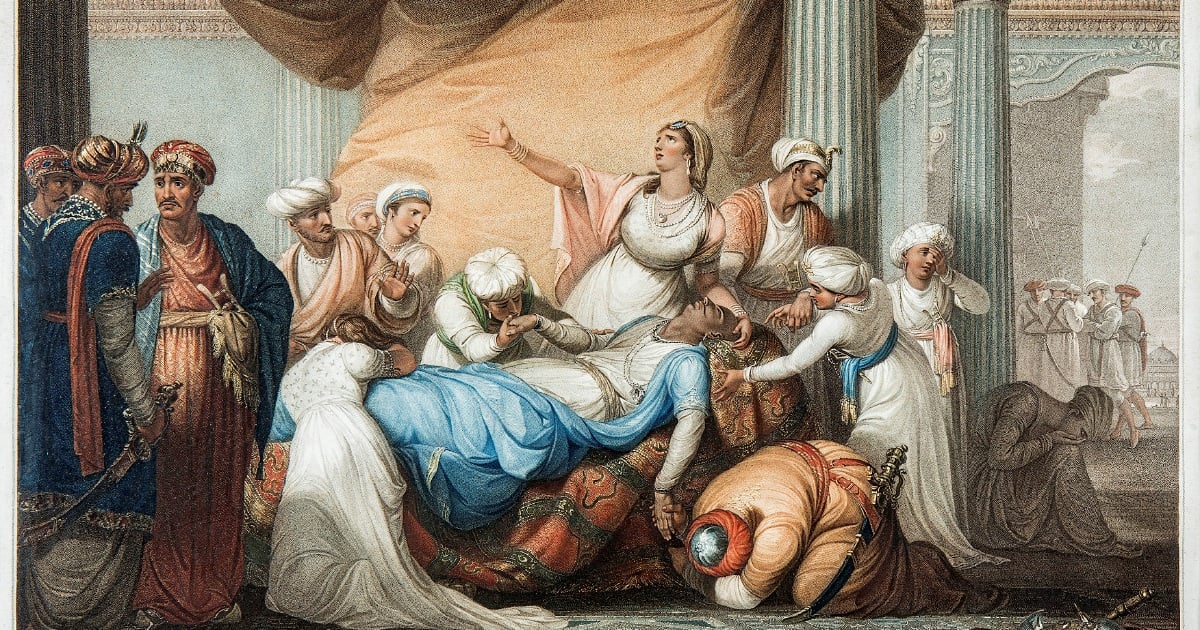CELEBRITY status doesn’t usually last long for world leaders. As long ago as the eighteenth18th century, those few names that were known across the planet endured a little longer. Haider Ali and Tipu Sultan have sunk into obscurity, as has their kingdom.
Mysore only exists as a part of southern-Indian history these days. Karnataka is the modern incarnation and this includes locations which have become more celebrated in recent years for reasons that might have pleased Tipu Sultan.
Everyone in Malaysia with an interest in tech will be familiar with Bangalore (or Bengaluru as it is known in India). This is Asia’s Silicon Valley and is apparently growing faster than the sluggish old mothership in California.
Malaysia’s connections with southern India have been strong for more than 2,000 years. Now they are even stronger, thanks to the Islamic Arts Museum Malaysia’s (IAMM) latest exhibition. More than a Day as a Tiger: Haider Ali and Tipu Sultan of Mysore (1761-99) opened recently and should spark some interest in a kingdom that didn’t last long, but almost beat the British as they advanced unstoppably across India 250 years ago.
This father-and-son dynasty was the last one to thwart British ambitions in the Subcontinent. They were also remarkable for being Muslim rulers of a Hindu-majority kingdom. This has not endeared them to the current leadership of India.
The name of Tipu Sultan, in particular, has been out of favour for more than a decade. Having Mahatma Gandhi praise him as a resistance hero at the time of independence hasn’t helped the Mysorean cause either; Gandhi has also been demoted from his position as unimpeachable father of the modern republic.
TIPU’S TREASURES
At the IAMM it’s the artefacts which do the talking. Tipu Sultan, the “Tiger of Mysore”, had long been Britain’s bogeyman — an eastern counterpart to Napoleon in the west. The two were allies in their hatred of the British. If Admiral Nelson had not defeated the French in Egypt, Napoleon’s next stop would have been India, where he was supposed to help the Mysoreans.
Both rulers failed and so did Tipu’s father. Tipu’s name, which is mystifying in the Malay language, was a consequence of his parents visiting a Sufi holy man — Tipu Maastan Aulia — in the hope of having a male heir. Although their wish was granted, the dynasty was over within 40 years.
Tipu’s treasures were mostly made in Mysore and then scattered to the winds. British souvenir hunters in the early nineteenth19th century were especially enthusiastic. The systematic, officially sanctioned redistribution of Tipu’s possessions made collecting them easy.
It became a badge of honour for families linked with India to proclaim their part in empire building; weapons and knick-knacks belonging to Tipu Sultan did the job admirably. It was also British policy to prevent a Mysorean cult of martyrdom, although it’s hard to imagine Tipu’s many handkerchiefs ending up as relics inciting rebellion.
Just in case, the British authorities auctioned or handed out as “prizes of war” the entire contents of Tipu’s palaces. Trophies that couldn’t be removed in one piece, such as Mysore’s legendary jewel-encrusted throne, were taken apart to ensure fair shares.
The looting of Tipu Sultan’s kingdom was considered exceptional at the time. A young Arthur Wellesley, the future Duke of Wellington, was appalled by what he saw in Tipu’s capital: “Scarcely a house in the town was left unplundered, and I understand that in the camp, jewels of the greatest value, bars of gold etc. etc. have been offered for sale in the bazaars of the army by our soldiers, sepoys and followers…” He managed to restore order with the help of hangings and floggings.
TREASURES GALORE
Britain turned out to be a safe repository. Almost everything removed from Mysore has stayed there, until recently. Many of those who acquired the choicest plunder ingratiated themselves by presenting their spoils to King George III or the Prince Regent. At Carlton House, the future George IV displayed the militaria that he so wanted to use but never did.
Dominating his personal collection was an “effigy of Tippoo Sultan on horseback, in a dress that he wore”. The Royal Collection still has the supreme Tipu Sultan souvenirs, including several pieces of his throne. Other bejewelled bits of this enormous structure can now be found as far away from Carlton House as Kuala Lumpur.
Despite having no gem encrustations, one of the most celebrated of Tipu’s treasures is the ‘bedchamber sword’, taken from the inner sanctum of his favourite palace. The ruler slept in a hammock with guns and a sword as his companions.
A harem of several hundred women was kept down the corridor. The sword was more than just Tipu’s last line of defence; it combines superb artistry with an inscription on the blade engraved by the British Army after being presented to commander Major General Baird.
Many of Tipu’s possessions were in the grandest houses of Great Britain before journeying back to Asia, specifically to the IAMM. Powis Castle in Wales was home to two exceptional cannons, filled with tiger imagery.
They have not seen much use since being captured at Tipu’s fortress in Srirangapatna. The last time they were called into action was in 1832 to announce a visit to Powis Castle by the then Princess Victoria, before she became Queen and then Empress.
Equally imposing is Wilton House, Wiltshire, home of the Earls of Pembroke for about five centuries. Used for filming TV shows that range from the tawdry Bridgerton to the super-refined Sense and Sensibility, what the dramas never show is Tipu’s most remarkable firearm.
The hunting gun is not only a technological marvel, but it is also decorated with an exceptionally strong showing of tigers. The problems of obtaining an export licence from the UK were detailed by this writer in the New Straits Times six years ago.
After almost 10 years of obstructions, it’s now in Malaysia and on display in “More than a Day as a Tiger”
Although this gun was used for hunting animals rather than humans, Tipu Sultan’s weaponry tends to eclipse his economic and diplomatic legacies. These were both far ahead of their time. He was also a philosopher, poet and lover of fine jewels.
One of the few surviving examples is a gem-encrusted gold finial, stripped by the British from his throne. It now sparkles away majestically in the new exhibition.
REMARKABLE LEADER
Little remains of Mysore’s diplomatic legacy. Tipu Sultan sent out many embassies for the sake of trade and military collaborations. They were meant to travel as far west as the court of King George III but never made it to England. Nor did the four elephants that the ambassadors brought with them.
None survived the sea passage to Western Europe or to Sultan Abdul Hamid II in Istanbul. Economic and diplomatic projects rarely leave a physical trace. One very important exception is in the Islamic Arts Museum Malaysia.
When the Mysorean embassy reached King Louis XVI in 1788, it was the talk of the beau monde in Paris and Versailles. The event would have been less memorable if not for a painting of Ambassador Muhammad Dervish Khan.
Painted by France’s leading woman artist of the time, Elisabeth Vigee-Le Brun was renowned for her portrait of Marie Antoinette. The embassy was a triumph for Indian fashion, sparking ‘Tipumania’ among the French.
The king, however, was too preoccupied with impending revolution to be of any assistance. The ambassador in this remarkable painting was beheaded for failure on his return to Mysore. The king and queen of France met the same fate later.
Soon after that, Tipu Sultan died fighting the British in 1799. Much as the British had feared and derided him during his lifetime, in death they turned him into a worthy adversary. His possessions were revered for at least a century before his name faded in the UK.
With the latest exhibition at the IAMM, there is a chance that a new audience will become acquainted with a remarkable leader who has suffered more than most from the fickle nature of fame.
Follow Lucien de Guise at Instagram @crossxcultural
LEADER’S LEGACY
More than a Day as a Tiger: Haider Ali and Tipu Sultan of Mysore (1761-99)
WHERE: Islamic Arts Museum Malaysia, Jalan Lembah, Tasik Perdana, Kuala Lumpur
ENDS: Jan 11, 2026
© New Straits Times Press (M) Bhd






